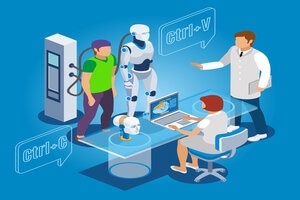


Chronic conditions like diabetes, hypertension, COPD, and heart disease require more than just periodic checkups—they demand ongoing, coordinated care
Chronic conditions like diabetes, hypertension, COPD, and heart disease require more than just periodic checkups—they demand ongoing, coordinated care. That’s where Chronic Care Management software becomes a game-changer, especially for multidisciplinary care teams. By centralizing data, streamlining communication, and enhancing collaboration, CCM software empowers care teams to deliver personalized, proactive, and efficient care—ultimately leading to better patient outcomes.
Understanding Multidisciplinary Care Teams
A multidisciplinary care team typically includes primary care physicians, specialists, nurses, pharmacists, care coordinators, and sometimes even behavioral health professionals. Their goal is to collaboratively manage a patient’s chronic conditions, addressing the medical, emotional, and lifestyle aspects of care.
However, without the right tools, coordinating between so many providers can lead to:
This is where CCM software steps in.
One of the biggest advantages of CCM software is its centralized patient data hub. Every member of the care team can access:
This eliminates silos, reduces errors, and ensures everyone is aligned on the patient’s care journey. It’s especially valuable for patients with multiple comorbidities, where care decisions must be made based on a full picture, not isolated data.
Modern CCM platforms often include secure messaging and shared task management. These features allow care team members to:
This helps ensure timely interventions and prevents gaps in care. For instance, if a cardiologist updates a medication dosage, the primary care physician and pharmacist are automatically informed.
CCM software allows each care team member to contribute to and execute personalized care plans based on their expertise. Role-based access ensures sensitive data is only viewed by the relevant professionals, while still enabling collaborative input into the patient’s plan.
This shared responsibility improves accountability and ensures that care is patient-centered—not provider-centric.
CCM platforms often integrate with remote patient monitoring (RPM) tools and wearables. This means care teams can track real-time vitals like blood pressure, glucose levels, and oxygen saturation.
If any values cross dangerous thresholds, automatic alerts are sent to the relevant providers—allowing for early interventions and reducing the risk of hospitalizations.
By facilitating better care team coordination, CCM software also enhances the patient experience. Patients receive:
This boosts trust, adherence to care plans, and ultimately—health outcomes.
Conclusion
Chronic care is complex, but with the right tools, it doesn’t have to be chaotic. CCM software bridges the gaps between multidisciplinary care team members, enabling them to work as a cohesive unit. The result? Better coordination, timely interventions, and improved outcomes for patients who need it most.
